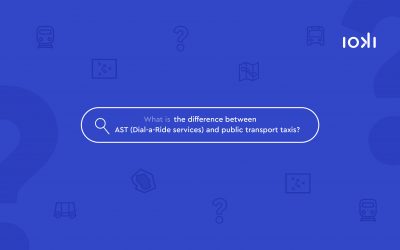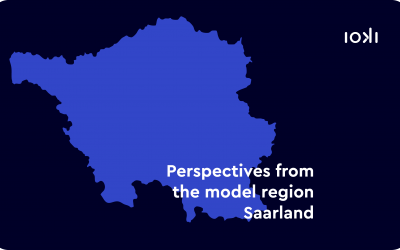
Intermodal Journeys
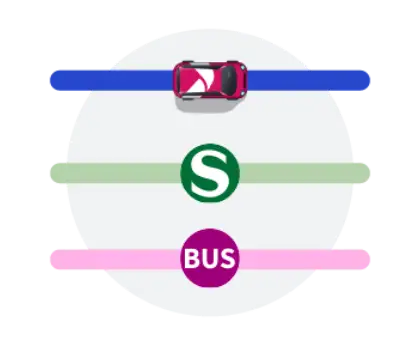
Multimodal Trips

Public Transport Connections
Intermodal Journeys
A passenger wants to travel to a lake outside their home. They use the train for most of the journey and bridge the last mile with an on-demand service. The feature “Intermodal Journeys” allows the passenger to see the entire journey in the ioki Passenger App – from their front door to the lake.
To achieve this, the transport provider pre-configures the system by defining an intermodal zone surrounding its on-demand areas. Passengers can enter their starting point and destination into the ioki Passenger App as usual to search for a suitable connection, both within and beyond the on-demand service area. Depending on the configuration, passengers will see the following options:

DRT + public transport, as a feeder
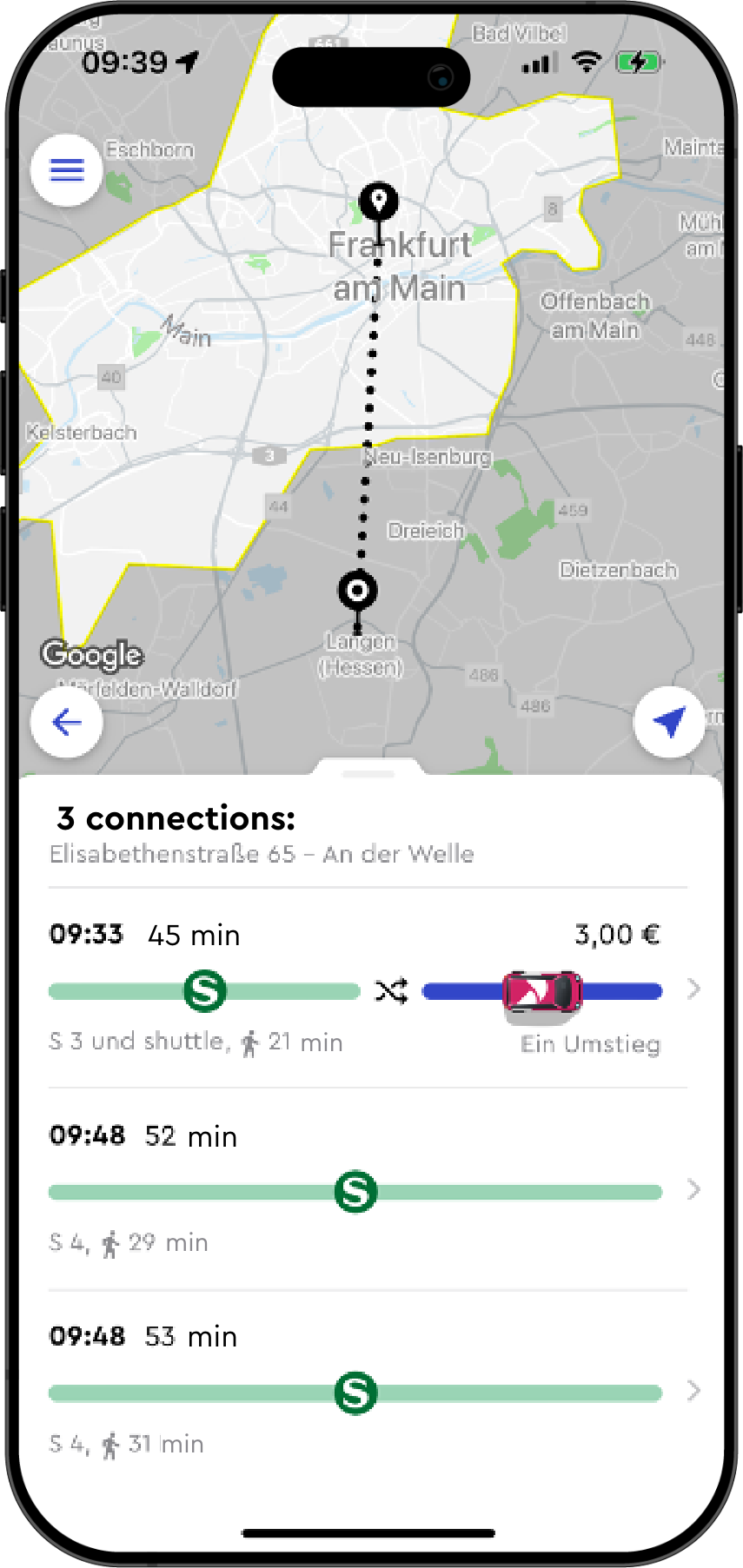
Public transport + DRT, as a drop-off
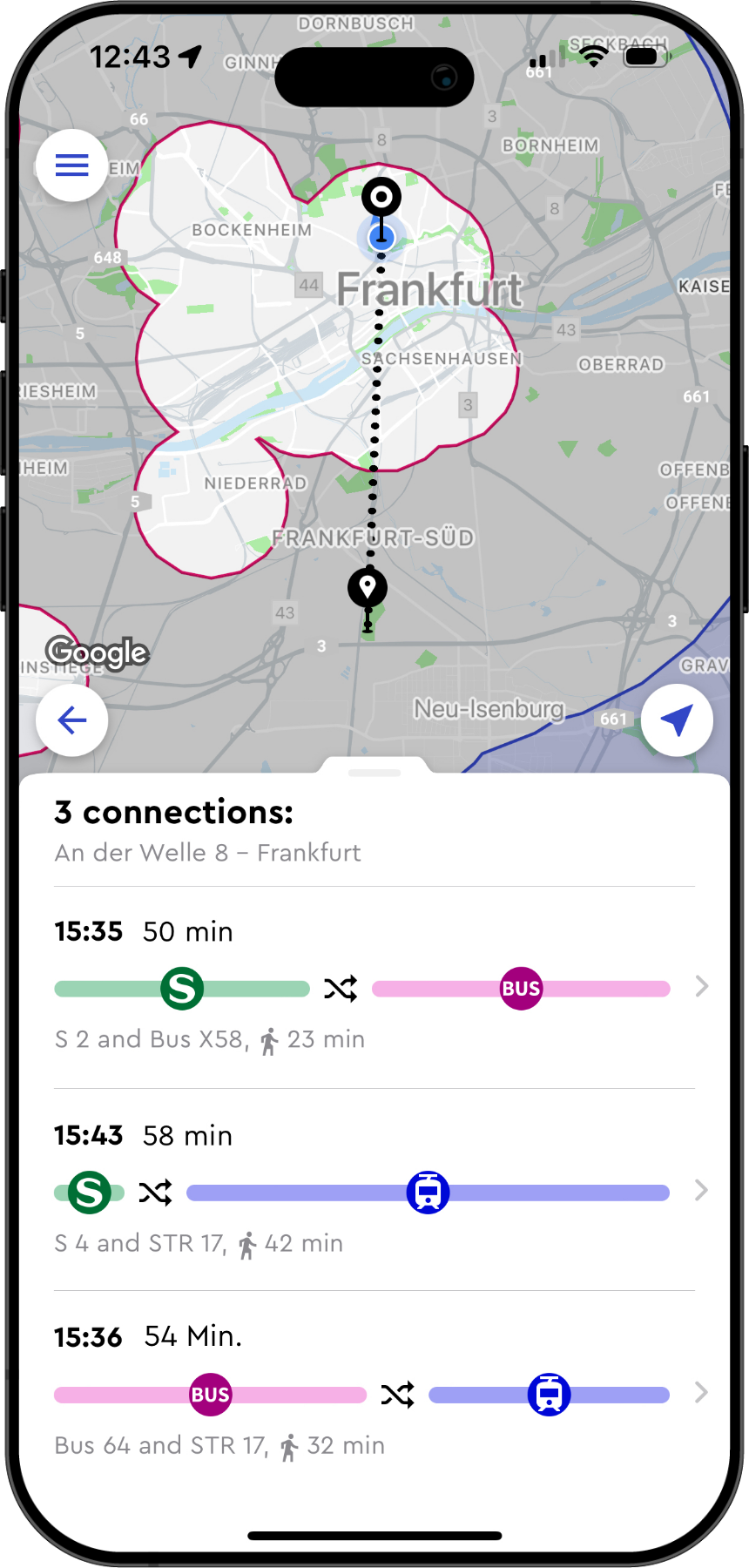
Public transport only
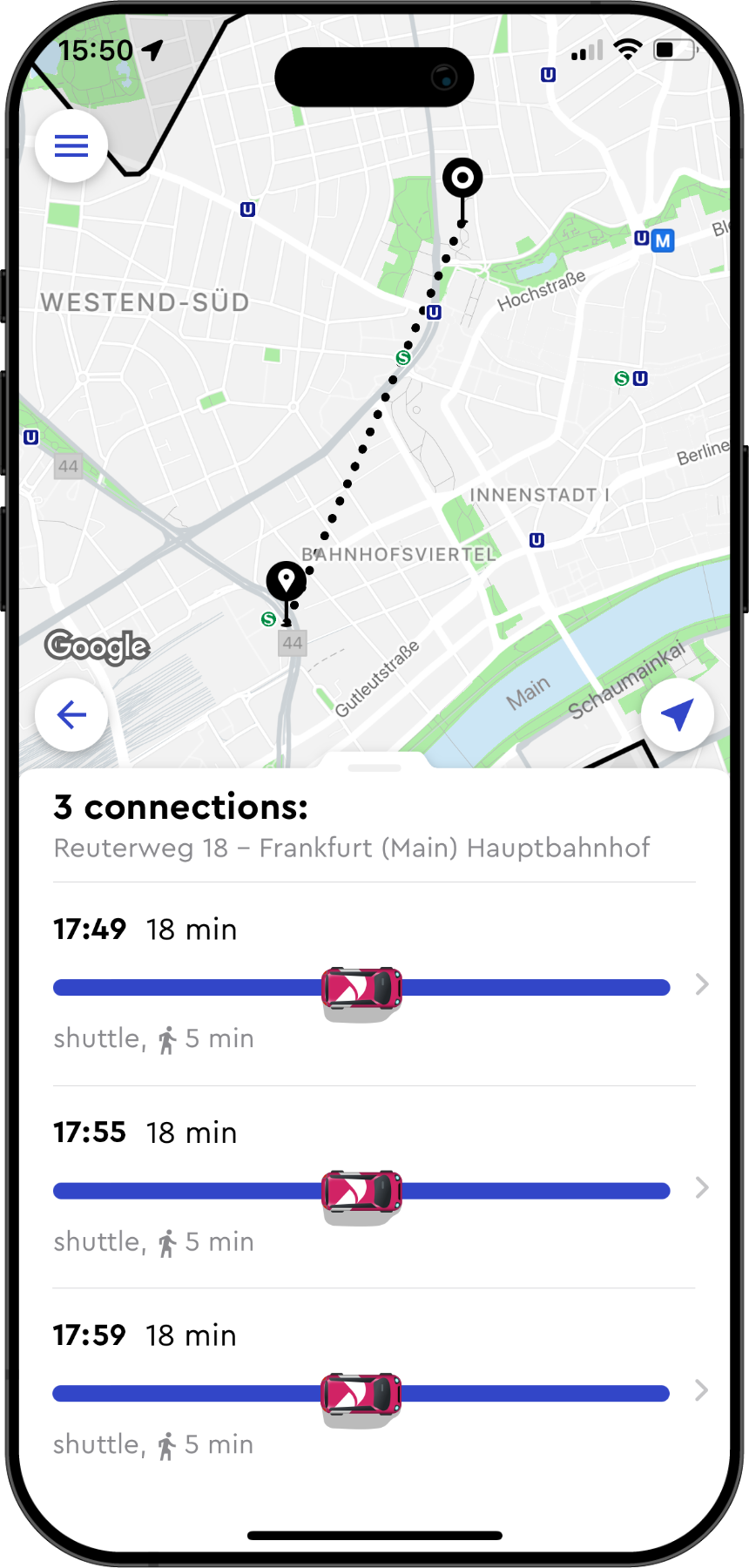
DRT only
Multimodal Trips
The passenger wants to see different options in the ioki Passenger App for their journey from home to work. With the “Multimodal Trips” feature, the app offers a traditional local transport option alongside the on-demand service. This can be advantageous as the passenger might reach their destination just as quickly and conveniently, but at a lower cost. The savings depend on the local public transport fares and services.
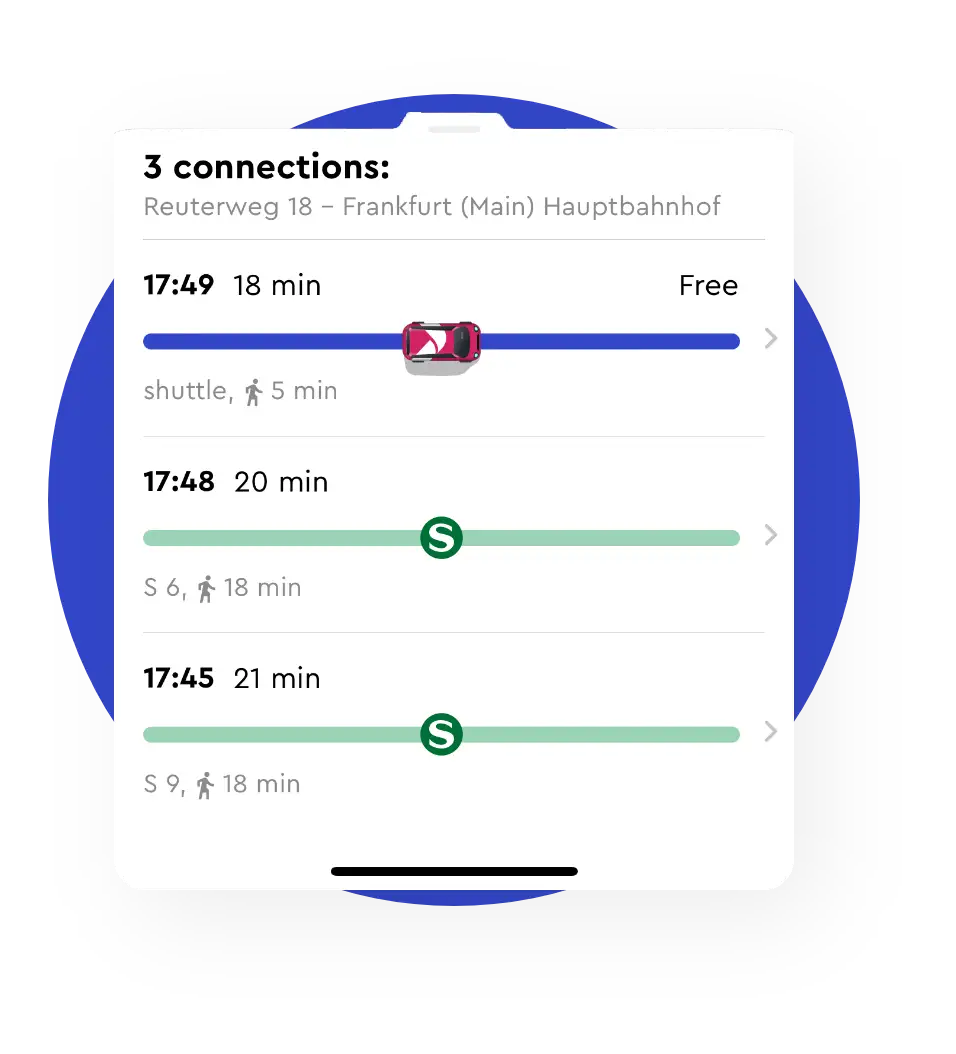

Public Transport Connections
The passenger uses an on-demand service to get to the nearest station and wants to know if they will catch their train there. With the “Public Transport Connections” feature in the ioki Passenger App, they can view all departure times for that stop.
Discover more features on our platform
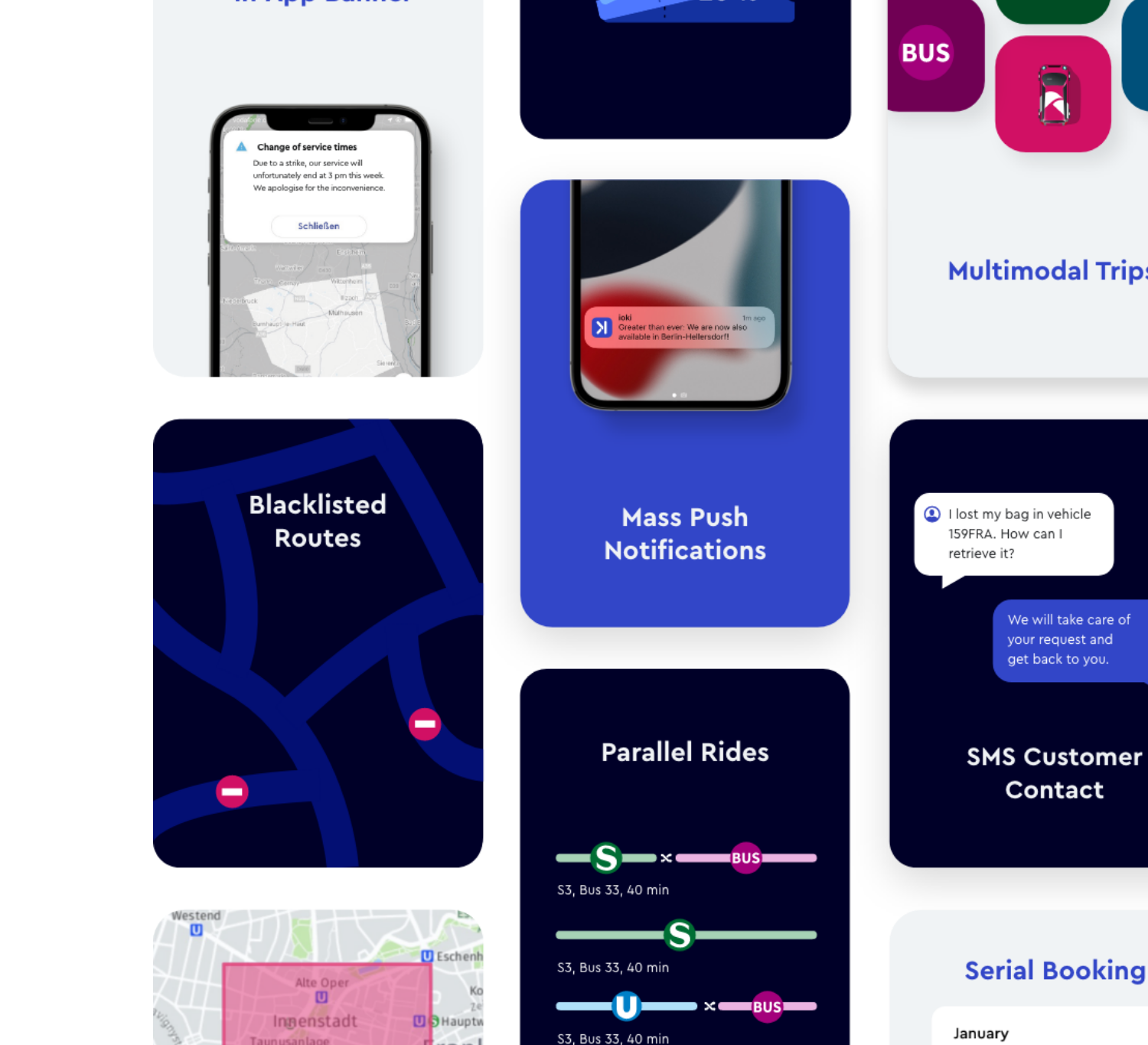
Software API as the key to public transport integration
Public transport integration works in the 3 scenarios via a timetable information software, which is integrated into the ioki Platform through an application programming interface (API).
This interface is utilised by the system to display multimodal connections and public transport information, providing the same data as the DB Navigator app.
For intermodal journeys, the transport provider defines public transport hubs in the control centre where it makes sense for passengers to transfer. Parameters such as transfer time and the maximum number of transfers are considered. When searching for a route, the algorithm first looks for a public transport connection and checks for a defined hub along the route. The interface is then used again to calculate and display the public transport information.


